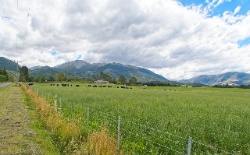CRIs deliver benefit to New Zealand
Tue, 19 Oct 2004
From Association of Crown Research Institutes
CRIs deliver benefit to New Zealand
The drive to develop and then transform knowledge into economic, environmental and social benefit to New Zealand is the recurring theme in the Annual Reports of all nine Crown Research Institutes (CRIs) tabled in Parliament on Friday 15 October 2004.
The Annual Reports illustrate how communities and businesses are benefiting from science-based solutions developed by or with the CRIs.
Anthony Scott, executive director of the Association of Crown Research Institutes said:
"The CRIs are delivering on their purpose to provide research of excellence, relevance and benefit to New Zealand, whilst maintaining their economic viability.
"This is shown by increased investment coming from two main sources:
"The private sector is increasing its investment in R&D as a source of product and process improvement and innovation;
"Local and central government is turning more to science research to help solve problems, or to ensure better quality information for policy decisions in a range of areas."
Revenue across all CRIs in the financial year to end of June 2004, has increased to $534.4 million from $523.2 million, shareholder equity improved by $22.4 million to $317.7 million, and net surplus after tax increased by 45 per cent to $13.3 million. Staff numbers rose by 19 to 4,122 FTE (full time equivalents).
The Foundation for Research, Science & Technology (FRST), the Government's main central research investor, now accounts for 42 per cent of total CRI revenue (although this varies significantly across CRIs). In 2001, FRST (at $252 million) accounted for 52% per cent of total CRI revenue.
"The Statistics New Zealand R&D Survey shows that CRIs complement private sector R&D activity. Most private sector R&D is still done in-house, but an increasing level is being commissioned from CRIs.
"This enables New Zealand firms - relatively small by international standards - to access the world class skills and equipment, wide sectoral knowledge and global connectedness of CRI scientists. This is being actively encouraged by CRIs lowering real or perceived barriers to access and increasing linkages.
"The many case studies in the Annual Reports show that having science organizations that connect science to solutions is a strategy that works for New Zealand's benefit, with significant rates of return on the investment.
"CRIs are increasing their partnerships with other New Zealand science enterprises, including universities and research associations; and also with companies and research organisations overseas which attract further knowledge and investment into New Zealand."
The Annual Reports also highlight how CRIs are preparing New Zealand for uncertain futures.
"Each CRI services existing sectors, in current and foreseeable needs and possible change. CRIs also ask how new sectors might arise using the resources in fresh ways to meet new demands.
"This is a challenging but vital role. It requires world class scientists attuned to global trends and committed to translating those into practical ideas for New Zealand society, economy and environment."
Non-financial measures Each CRI reports on non-financial measures appropriate to it, such as papers for international and national conferences, science journals, popular books, scientific and technical reports, and communication with the public.
These non-financial measures highlight that CRIs must do work of excellence, maintain New Zealand's position in the international science community, and also promote science and technology in various ways.
They also illustrate that CRIs exist to contribute to the public good, and that the financial measures are to ensure proper financial disciplines and economic viability.
As the non-financial measures vary across CRIs, it is not possible to give a single total encompassing all nine CRIs.
However, from those reporting the following measures, CRIs contributed some 1,400 papers to international journals, produced more than 140 research monographs and books, and nearly 30 popular books and more than 2,000 scientific and technical reports. This output contributes to New Zealand scientists being seven times more productive than USA scientists, and ten times that of Japan - with many CRI scientists exceeding even those rates.
ACRI supports the common interests of the nine Crown-owned science enterprises: AgResearch, Crop & Food Research, ESR, Forest Research, GNS, HortResearch, Industrial Research, Landcare Research, NIWA.
Crown Research Institutes contribute to the economic, environmental, social and knowledge wealth of New Zealand in diverse ways.
The CRIs undertake discovery, applied and commercialised science and technology research for government and private sector markets in New Zealand and abroad; and transfer that to private and public sectors. See www.acri.cri.nz for links to each CRI website.
ENDS


 Citizens of the Sea: Sailors To Revolutionise Our Understanding Of Pacific Biodiversity
Citizens of the Sea: Sailors To Revolutionise Our Understanding Of Pacific Biodiversity Netsafe: Making A Splash With Online Safety: Netsafe Launches New Flagship Programme For Kids
Netsafe: Making A Splash With Online Safety: Netsafe Launches New Flagship Programme For Kids NZGBC: Flood Resilience PhD Student Widi Auliagisni Named Future Thinker Of The Year 2024
NZGBC: Flood Resilience PhD Student Widi Auliagisni Named Future Thinker Of The Year 2024 Business Canterbury: European Free Trade Agreement A Game-changer For Canterbury
Business Canterbury: European Free Trade Agreement A Game-changer For Canterbury Business Canterbury: Urges Council To Cut Costs, Not Ambition For City
Business Canterbury: Urges Council To Cut Costs, Not Ambition For City Wellington Airport: On Track For Net Zero Emissions By 2028
Wellington Airport: On Track For Net Zero Emissions By 2028



